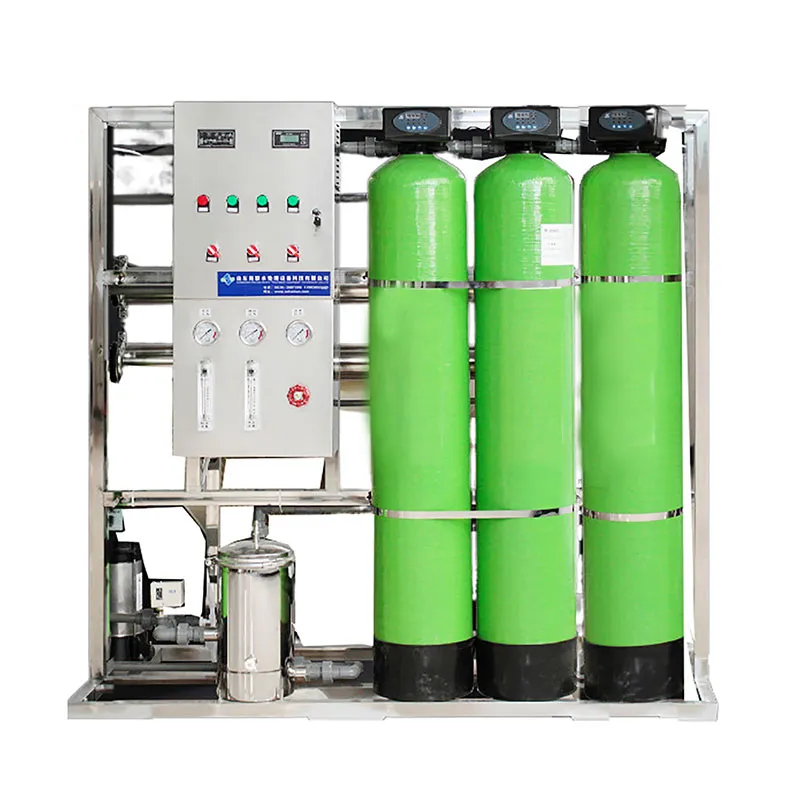What Equipment is Used in Water Treatment?
2024-09-19
Water is a vital resource, and ensuring its cleanliness and safety is essential for human health, agriculture, and industrial processes. Water treatment Equipments are designed to remove impurities, contaminants, and harmful substances from water, making it safe for consumption and other uses. But what equipment is involved in this complex process? In this blog, we'll explore the essential equipment used in water treatment, covering everything from filtration systems to chemical dosing units.

Why Is Water Treatment Necessary?
Water treatment ensures that water, whether sourced from rivers, lakes, or groundwater, meets safety and quality standards before being used for drinking, irrigation, or industrial purposes. The treatment process typically removes contaminants such as:
- Suspended solids
- Bacteria and pathogens
- Heavy metals
- Organic materials
- Chemicals and pollutants
By using specialized equipment, water treatment plants can effectively purify water and make it fit for various applications.
Key Equipment Used in Water Treatment
Water treatment involves several stages, and each stage requires specific equipment to remove different types of contaminants. Here's a breakdown of the essential water treatment equipment used in the process:
1. Screens
Screens are one of the first components used in water treatment to remove large debris such as sticks, leaves, and other floating materials. This is known as the pre-treatment phase and helps protect downstream equipment from clogging or damage.
- Bar Screens: These are simple metal grids that trap large objects as water flows through.
- Fine Screens: Finer screens capture smaller particles, improving the filtration process later on.
2. Coagulation and Flocculation Equipment
Once the larger debris has been removed, the water enters the coagulation and flocculation stage. This step involves adding chemicals (coagulants) to clump together small particles that are too fine to be filtered out through regular screens.
- Coagulant Dosing Units: These machines add precise amounts of coagulants (like alum or ferric chloride) to the water, helping particles bind together.
- Flocculation Tanks: These tanks provide the necessary mixing to promote the formation of larger clumps, called flocs, which can be easily separated from the water.
3. Clarifiers and Sedimentation Tanks
After coagulation and flocculation, the water moves into clarifiers or sedimentation tanks. These systems allow the heavy flocs formed in the previous stage to settle at the bottom of the tank.
- Circular Clarifiers: These are large, round tanks with a rotating arm that collects settled sludge from the bottom.
- Lamella Clarifiers: These systems use inclined plates to speed up the sedimentation process, making them more efficient for smaller treatment plants.
4. Filtration Systems
Filtration is a crucial step in water treatment that removes remaining suspended particles, bacteria, and other contaminants from the water.
- Sand Filters: These filters use layers of sand and gravel to trap fine particles as water passes through.
- Membrane Filters: Membrane filtration, including microfiltration and ultrafiltration, uses thin layers of material to filter out even smaller particles, bacteria, and viruses.
- Activated Carbon Filters: These filters are used to remove organic compounds, chlorine, and odors, improving the taste and quality of water.
5. Disinfection Equipment
To ensure the water is free from harmful pathogens and bacteria, disinfection is a necessary step. This is particularly important for drinking water treatment.
- Chlorination Systems: Chlorine is a common disinfectant used to kill bacteria, viruses, and other pathogens in water. Chlorine dosing systems carefully regulate the amount of chlorine added.
- Ultraviolet (UV) Disinfection: UV light is used to destroy bacteria and viruses by altering their DNA, rendering them inactive. UV systems are effective and environmentally friendly since they don’t add chemicals to the water.
- Ozonation Systems: Ozone gas is another powerful disinfectant used in some water treatment plants. Ozonation is effective against microorganisms and can also improve water quality by oxidizing organic matter.
6. Reverse Osmosis (RO) Systems
Reverse osmosis is a highly efficient filtration process used to remove dissolved salts, minerals, and other contaminants from water. This process forces water through a semi-permeable membrane, leaving impurities behind.
- RO Membranes: These membranes are the heart of any reverse osmosis system, filtering out particles as small as ions.
- Pressure Pumps: High-pressure pumps are essential for pushing water through the RO membranes.
RO systems are commonly used in desalination plants, where seawater is treated to produce fresh water.
7. Chemical Dosing Systems
To ensure the proper chemical balance and prevent corrosion or scaling, chemical dosing systems are often used in water treatment plants. These systems introduce chemicals such as pH adjusters, anti-scalants, or corrosion inhibitors into the water.
- pH Dosing Systems: These systems adjust the pH level of water to ensure it is within safe and neutral ranges.
- Antiscalant Dosing: This is used in desalination and other processes to prevent mineral buildup on equipment, ensuring smoother operation.
8. Sludge Treatment Equipment
Water treatment plants generate sludge as a byproduct of removing contaminants from the water. Proper sludge management is essential to minimize environmental impact.
- Thickeners: These devices concentrate sludge by removing excess water, making it easier to handle and dispose of.
- Centrifuges: Centrifugal force is used to separate water from sludge more efficiently.
- Belt Filter Presses: These machines use pressure to remove water from sludge, leaving a dry, solid material for disposal.
9. Water Storage Tanks
After the treatment process, clean water is stored in water storage tanks before being distributed. These tanks ensure that water is readily available for use when needed.
- Clearwater Tanks: These tanks store treated water and are often built to hold large volumes for community or industrial use.
- Underground Storage Tanks: In some cases, treated water is stored underground to protect it from contamination or evaporation.
10. SCADA and Monitoring Systems
Modern water treatment plants rely heavily on automation and Supervisory Control and Data Acquisition (SCADA) systems. These systems monitor the entire treatment process, providing real-time data on flow rates, pressure, chemical levels, and more.
- Sensors: Installed throughout the plant, sensors measure critical parameters such as turbidity, pH, and chlorine levels.
- Control Panels: Operators use control panels to adjust valves, pumps, and other equipment based on the data from sensors.
Water treatment is a complex process that requires a variety of specialized equipment, each playing a crucial role in ensuring that water is safe and clean for consumption and industrial use. From screening out large debris to filtering microscopic particles and disinfecting water, every piece of equipment contributes to the overall goal of delivering high-quality water. Understanding how these components work together can give you greater appreciation for the intricate systems that provide the clean water we rely on daily.
After over 3 decades of development, Qingzhou Water Conservancy Machinery Factory Co., Ltd., with brand BaoLai, keeps increasing business, and Shandong Laizhi Import&Export Co., Ltd. was founded to serve our clients overseas. The company’s main products are suspended roller concrete pipe machine, vertical pipe machine, centrifugal concrete pole making machine, cage-welding machine and all other equipment you might needed for your concrete producing business. Visit https://www.baolaimachinery.com to discover our latest products. If you need assistance, you can get in touch with us at sales@baolaimachinery.com.
























